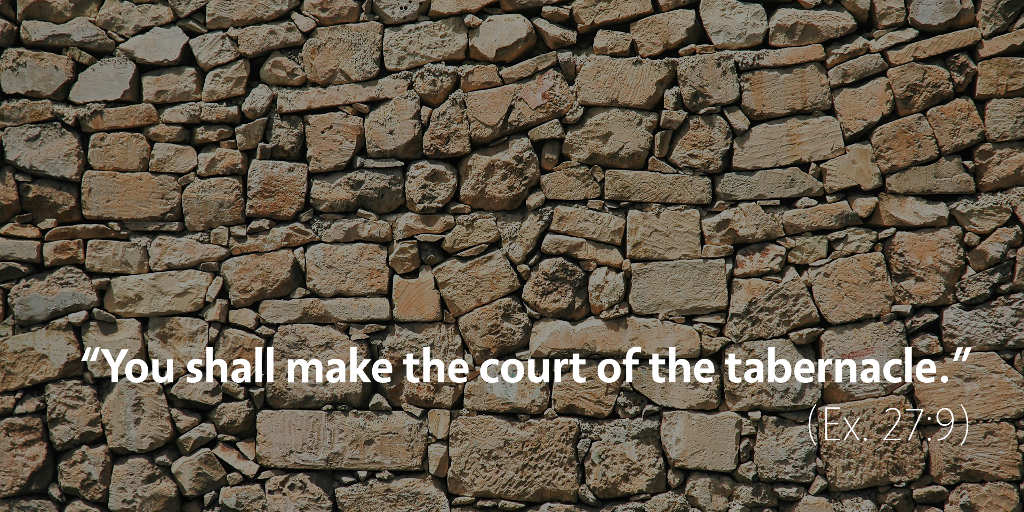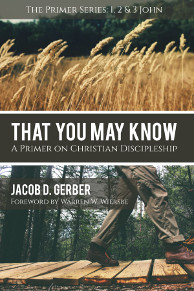Bible Readings for March 16th
Exodus 27 | John 6 | Proverbs 3 | Galatians 2
Despite the fact that normal Israelites were not allowed into the holy places, the tabernacle was nevertheless supposed to be the place where Yahweh dwelt in the midst of all his people. So in Exodus 27, Yahweh made a provision for his people to approach his tabernacle in a very specific way: the Israelites would bring sacrifices to the tabernacle to offer on the bronze altar in the court of the tabernacle, outside of the holy places.
The court was built to accommodate hundreds of worshipers as they filed through to offer their sacrifices, both in the size and the relative holiness of the area.1 So, the court was larger than the two holy places, but it was also classified at a lower degree of holiness so that Israelites could safely come to seek atonement for their sins.
The gradations of holiness in the whole tabernacle, then, worked like this: only the high priest could enter the Most Holy Place and only once each year, but all the priests ministered regularly in the Holy Place. All other Israelites were permitted to enter the court but only to bring their sacrifices, which the priests would offer up on the bronze altar.2
It seems that later on, yet another partition was added to the temple, keeping Gentiles separated farther back from where the Jews were permitted to go. Paul refers to this area as the “dividing wall of hostility” in Ephesians 2:14, since that barrier became fuel for hostilities between Gentiles and Jews.3 But then, Paul explains in Ephesians 2:14–16 that Jesus, through his death on the cross, tore down that dividing wall. Jesus did this, Paul explains, to kill the hostility (Eph. 2:16) but also to preach “peace to you who were far off and peace to those who were near” (Eph. 2:17).
The divisions to keep distance between various degrees of holiness served a purpose in the old covenant—that is, to bring as many people as close to God’s holiness as possible—but Jesus achieved that purpose in totality when he died on the cross. The gospel announces that Christ has made peace on our behalf—both with the holy, consuming-fire God and also with our fellow believers.
In fact, Paul finishes that passage in Ephesians 2 by explaining that all of us—Jews and Gentiles, saints and strangers—are being joined together into God’s new holy temple, the dwelling place for God by his Spirit (Eph. 2:19–22). What God accomplished in part through the tabernacle, he has accomplished to a much further degree through the work of Jesus Christ.
And one day, the need for the temple will be abolished forever, since the New Jerusalem’s “temple is the Lord God the Almighty and the Lamb” (Rev. 21:22). All distance and division will be put away, and we will all dwell together with God in perfect holiness forever.
1 Douglas K. Stuart, Exodus, TNAC, vol. 2 (Nashville: Broadman and Holman, 2006), 597–98.
2 For a much deeper exploration of this theme, see Philip P. Jenson, Graded Holiness: A Key to the Priestly Conception of the World, JSOTS 106 (Sheffield, UK: Sheffield Academic Press, 1992).
3 For more detailed exegesis of this passage, see Frank Thielman, Ephesians, BECNT (Grand Rapids, MI: Baker Academic, 2010), 161–86.
Podcast: Play in new window | Download (5.3MB) | Embed
Subscribe: Apple Podcasts | RSS | More

Scripture quotations are from The Holy Bible, English Standard Version copyright © 2001 by Crossway Bibles, a division of Good News Publishers. Used by permission. All rights reserved.


